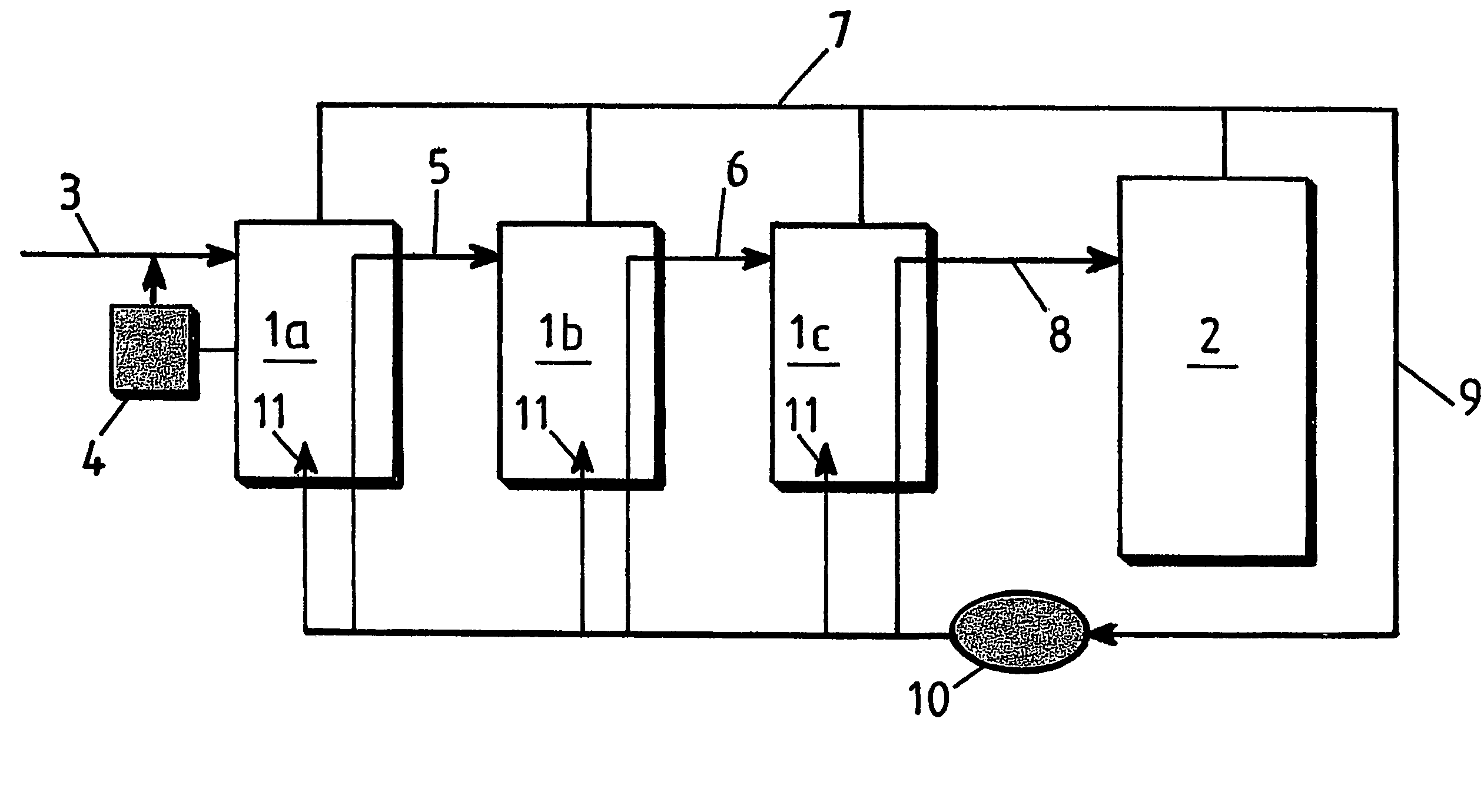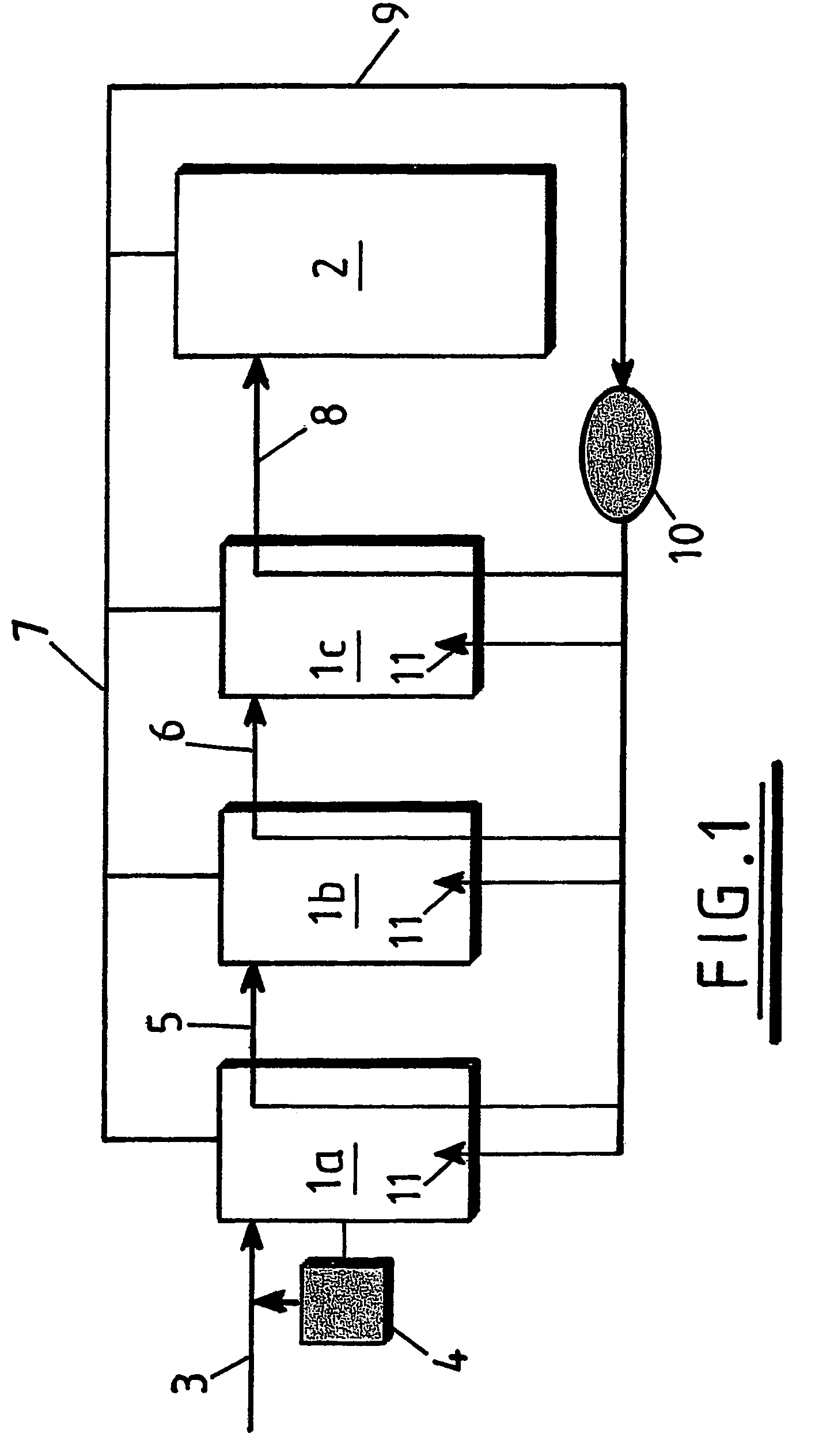Incubation treatment of sludge for pathogen reduction prior to digestion
- Summary
- Abstract
- Description
- Claims
- Application Information
AI Technical Summary
Benefits of technology
Problems solved by technology
Method used
Image
Examples
Embodiment Construction
[0030]Referring to the drawing, the schematically illustrated apparatus comprises a sludge treatment system of sequential incubators (in this case three) designated 1a, 1b and 1c which feed sludge to a downstream mesophilic anaerobic digester 2. A raw sludge feed line 3 is provided to deliver raw sludge to the upstream incubator 1a. A suitable heating means 4 is provided to heat the sludge within incubator vessel 1a to a temperature within the mesophilic temperature range. Sludge transfer lines 5 and 6 are provided between incubators 1a and 1b, and 1b and 1c respectively. Biogas generated by incubation within the vessels 1a to 1c is drawn off and fed to the head space of the downstream anaerobic digester 2 via gas lines 7. Gas lift pumps (not shown) are used to transfer sludge between the incubators and from the incubators to the digester via digester input line 8 using biogas which is drawn off from the digester via line 9 and pressurised by compressor 10. Each incubator vessel 1a ...
PUM
| Property | Measurement | Unit |
|---|---|---|
| Temperature | aaaaa | aaaaa |
| Temperature | aaaaa | aaaaa |
| Time | aaaaa | aaaaa |
Abstract
Description
Claims
Application Information
 Login to view more
Login to view more - R&D Engineer
- R&D Manager
- IP Professional
- Industry Leading Data Capabilities
- Powerful AI technology
- Patent DNA Extraction
Browse by: Latest US Patents, China's latest patents, Technical Efficacy Thesaurus, Application Domain, Technology Topic.
© 2024 PatSnap. All rights reserved.Legal|Privacy policy|Modern Slavery Act Transparency Statement|Sitemap


